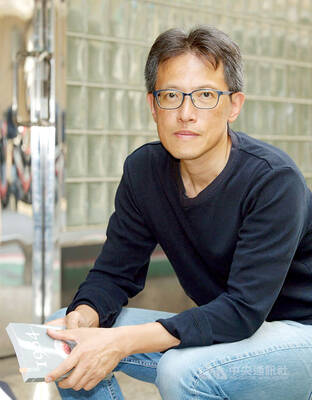Kitchen Pucci (葡吉小廚) is a tapas bar with Shanghai-style food. The interior of the restaurant is clean and modern, with floor-to-ceiling windows in the back that show off a row of live bamboo against a red brick wall. The petite portions of Shanghai classics, including xiaolongbao, or soup dumplings, are adorable, as are the restaurant’s extremely reasonable prices and quick, friendly service.
There are two versions of xiaolongbao, one filled with fragrant broth and one without. The best version is, not surprisingly, the former, which are called steamed Shanghai juicy dumplings (上海小籠包, NT$180 for 12) on the menu. Rich, savory and indeed juicy, they are served on a bed of pine needles, which, without altering the flavor, prevent the thin wrapper from sticking to the bamboo steamer. The other steamed dumplings (小籠包, NT$50 for three or NT$100 for six) are acceptable but lack the oomph that the broth provides.
Other pleasing picks on Kitchen Pucci’s menu include its small serving of “Szechuan-style” steamed spareribs (川味粉蒸排骨, NT$80), which are covered in ground rice flavored with spices, lots of pepper and served on top of steamed yam chunks. The tender meat slipped off the bone upon contact with our chopsticks. My dining companions and I also enjoyed the fried scallion roll with beef (大餅捲牛肉, NT$110). The crispy exterior of the wrapping gave way to a chewy center and the scallions landed just the right amount of kick (though the roll could have done with a little
more beef).
Kitchen Pucci’s noodle dishes come with “thin noodles” or chunky knife-shaved noodles (刀削麵), which are sliced directly from the dough into thick strips before being boiled. The knife-shaved noodles have a satisfyingly al dente texture without any unpleasant graininess on the inside. We liked them best in the Shanghai-style scallion mixed noodles (上海蔥開乾拌麵, NT$80) because the scallions, cooked several different ways (the green leaves fried until crispy, the white stalks boiled until soft) offered an unexpected melange of textures. The mixed noodles with spicy sauce (辣醬乾拌麵, NT$80) were also good, though not as fiery as the chili pepper symbol next to the menu entry suggests. The stir-fried knife-shaved noodles with Judas’ ear fungus (木須炒麵, NT$120), however, were too greasy and bland.
For dessert, consider the steamed bean paste buns (豆沙小包, NT$60 for six) — very thin flour wrappers stuffed with sweet red bean paste. Simple, but a suitable complement to the stronger flavored main dishes.

Mongolian influencer Anudari Daarya looks effortlessly glamorous and carefree in her social media posts — but the classically trained pianist’s road to acceptance as a transgender artist has been anything but easy. She is one of a growing number of Mongolian LGBTQ youth challenging stereotypes and fighting for acceptance through media representation in the socially conservative country. LGBTQ Mongolians often hide their identities from their employers and colleagues for fear of discrimination, with a survey by the non-profit LGBT Centre Mongolia showing that only 20 percent of people felt comfortable coming out at work. Daarya, 25, said she has faced discrimination since she

April 21 to April 27 Hsieh Er’s (謝娥) political fortunes were rising fast after she got out of jail and joined the Chinese Nationalist Party (KMT) in December 1945. Not only did she hold key positions in various committees, she was elected the only woman on the Taipei City Council and headed to Nanjing in 1946 as the sole Taiwanese female representative to the National Constituent Assembly. With the support of first lady Soong May-ling (宋美齡), she started the Taipei Women’s Association and Taiwan Provincial Women’s Association, where she

More than 75 years after the publication of Nineteen Eighty-Four, the Orwellian phrase “Big Brother is watching you” has become so familiar to most of the Taiwanese public that even those who haven’t read the novel recognize it. That phrase has now been given a new look by amateur translator Tsiu Ing-sing (周盈成), who recently completed the first full Taiwanese translation of George Orwell’s dystopian classic. Tsiu — who completed the nearly 160,000-word project in his spare time over four years — said his goal was to “prove it possible” that foreign literature could be rendered in Taiwanese. The translation is part of

It is one of the more remarkable facts of Taiwan history that it was never occupied or claimed by any of the numerous kingdoms of southern China — Han or otherwise — that lay just across the water from it. None of their brilliant ministers ever discovered that Taiwan was a “core interest” of the state whose annexation was “inevitable.” As Paul Kua notes in an excellent monograph laying out how the Portuguese gave Taiwan the name “Formosa,” the first Europeans to express an interest in occupying Taiwan were the Spanish. Tonio Andrade in his seminal work, How Taiwan Became Chinese,